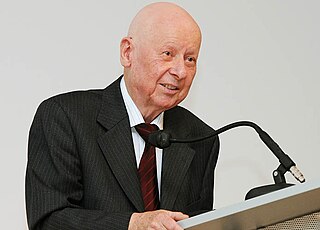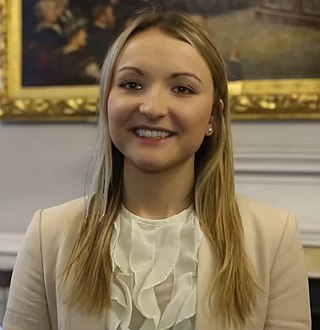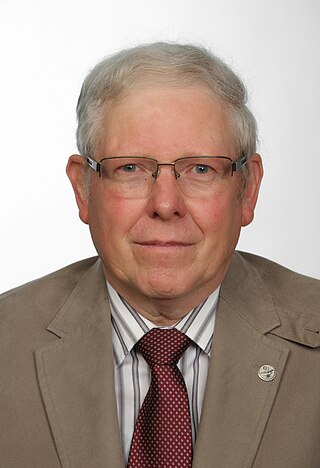Facility for Antiproton and Ion Research (FAIR)  |
 |
| Abbreviation | FAIR |
|---|
| Formation | 2010 |
|---|
| Location | |
|---|
Scientific Managing Director | n/n |
|---|
Administrative Managing Director | Katharina Stummeyer [1] |
|---|
Technical Managing Director | Jörg Blaurock [1] |
|---|
| Website | fair-center.eu |
|---|
The Facility for Antiproton and Ion Research (FAIR) [2] is an international accelerator facility under construction which will use antiprotons and ions to perform research in the fields of: nuclear, hadron and particle physics, atomic and anti-matter physics, high density plasma physics, and applications in condensed matter physics, biology and the bio-medical sciences. It is situated in Darmstadt in Germany.
FAIR will be based upon an expansion of the GSI Helmholtz Centre for Heavy Ion Research, the details of which have been laid out in the FAIR Baseline Technical Report 2006. [3] On October 4, 2010 the Facility for Antiproton and Ion Research in Europe limited liability company (German GmbH), abbreviated as FAIR GmbH, was founded which coordinates the construction of the new accelerators and experiments.
The construction begun in the summer of 2017. [4] Commissioning is planned for 2025. The original budget had been estimated at 1262 million euro (2005 price level), [5] in 2018 the German Federal Court of Auditors stated that the cost of FAIR had increased to at least 1669 million euro (2005 prices), [6] in 2019 a further report by the Federal Court of Auditors quoted results from a review board that an additional 850 million euro (2019 prices) would be needed to finish building the facility. [7]

The European Organization for Nuclear Research, known as CERN, is an intergovernmental organization that operates the largest particle physics laboratory in the world. Established in 1954, it is based in Meyrin, western suburb of Geneva, on the France–Switzerland border. It comprises 23 member states. Israel, admitted in 2013, is the only non-European full member. CERN is an official United Nations General Assembly observer.

The GSI Helmholtz Centre for Heavy Ion Research is a federally and state co-funded heavy ion (Schwerion) research center in the Wixhausen suburb of Darmstadt, Germany. It was founded in 1969 as the Society for Heavy Ion Research, abbreviated GSI, to conduct research on and with heavy-ion accelerators. It is the only major user research center in the State of Hesse.

The Tevatron was a circular particle accelerator in the United States, at the Fermi National Accelerator Laboratory, east of Batavia, Illinois, and was the highest energy particle collider until the Large Hadron Collider (LHC) of the European Organization for Nuclear Research (CERN) was built near Geneva, Switzerland. The Tevatron was a synchrotron that accelerated protons and antiprotons in a 6.28 km (3.90 mi) circumference ring to energies of up to 1 TeV, hence its name. The Tevatron was completed in 1983 at a cost of $120 million and significant upgrade investments were made during its active years of 1983–2011.

The Universal Linear Accelerator (UNILAC) is a heavy ion linac based at the GSI Helmholtz Centre for Heavy Ion Research near Darmstadt, Germany. It can provide beams of accelerated ions of elements from hydrogen to uranium with energies of 2 to 11.4 MeV / u.

TRIUMF is Canada's national particle accelerator centre. It is considered Canada's premier physics laboratory, and consistently regarded as one of the world's leading subatomic physics research centres. Owned and operated by a consortium of universities, it is on the south campus of one of its founding members, the University of British Columbia in Vancouver, British Columbia, Canada. It houses the world's largest normal conducting cyclotron, a source of 520 MeV protons, which was named an IEEE Milestone in 2010. Its accelerator-focused activities involve particle physics, nuclear physics, nuclear medicine, materials science, and detector and accelerator development.

The ISOLDE Radioactive Ion Beam Facility, is an on-line isotope separator facility located at the centre of the CERN accelerator complex on the Franco-Swiss border. Created in 1964, the ISOLDE facility started delivering radioactive ion beams (RIBs) to users in 1967. Originally located at the Synchro-Cyclotron (SC) accelerator, the facility has been upgraded several times most notably in 1992 when the whole facility was moved to be connected to CERN's ProtonSynchroton Booster (PSB). ISOLDE is currently the longest-running facility in operation at CERN, with continuous developments of the facility and its experiments keeping ISOLDE at the forefront of science with RIBs. ISOLDE benefits a wide range of physics communities with applications covering nuclear, atomic, molecular and solid-state physics, but also biophysics and astrophysics, as well as high-precision experiments looking for physics beyond the Standard Model. The facility is operated by the ISOLDE Collaboration, comprising CERN and sixteen (mostly) European countries. As of 2019, close to 1,000 experimentalists around the world are coming to ISOLDE to perform typically 50 different experiments per year.

Variable Energy Cyclotron Centre (VECC) is a premier research and development unit of the Department of Atomic Energy, Government of India. The VECC has three campuses located in Kolkata, India and performs research in basic and applied nuclear sciences and development of the latest nuclear particle accelerators. It has a collaboration with the European Organization for Nuclear Research. The Centre houses a 224 cm cyclotron—the first of its kind in India—which has been operational since 16 June 1977. It provides proton, deuteron, alpha particle and heavy ion beams of various energies to other institutions.

The Low Energy Anti-Proton Ring (LEAR) was a particle accelerator at CERN which operated from 1982 until 1996. The ring was designed to decelerate and store antiprotons, to study the properties of antimatter and to create atoms of antihydrogen. Antiprotons for the ring were created by the CERN Proton Synchrotron via the Antiproton Collector and the Antiproton Accumulator (AA). The creation of at least nine atoms of antihydrogen were confirmed by the PS210 experiment in 1995.
Sigurd Hofmann was a German physicist known for his work on superheavy elements.

The Helmholtz-Zentrum Dresden-Rossendorf (HZDR) is a Dresden-based research laboratory. It conducts research in three of the Helmholtz Association's areas: materials, health, and energy. HZDR is a member of the Helmholtz Association of German Research Centres.

Gerhard Kraft was a German physicist, best known for introducing heavy ion cancer therapy in Europe.
Ununennium (119Uue) has not yet been synthesised, so there is no experimental data and a standard atomic weight cannot be given. Like all synthetic elements, it would have no stable isotopes.
The PANDA experiment is a planned particle physics experiment at the Facility for Antiproton and Ion Research in Darmstadt. PANDA is an acronym of antiProton ANnihilation at DArmstadt.

The Helmholtz Institute Jena was founded as an outstation of the GSI Helmholtzzentrum für Schwerionenforschung on June 25, 2009 and is located on the campus of the Friedrich Schiller University (FSU) in the city of Jena, Germany. Its purpose is to unite the research activities of the FSU in the fields of high intensity laser physics and x-ray spectroscopy with the expertise of the Deutsches Elektronen-Synchrotron (DESY), GSI Helmholtzzentrum für Schwerionenforschung and Helmholtz-Zentrum Dresden-Rossendorf in the fields of accelerator physics, laser physics and x-ray technology. The research profile of the Helmholtz Institute Jena is focused on the physics occurring at the border between conventional particle-acceleration technology and the fast-evolving field of laser-induced particle acceleration.. It is concerned with advancing these new laser-induced accelerator concepts, as well as with the production and investigation of intense photon and particle beams, including their interaction with matter. Therefore the main activities of the institute are emphasized on the development of high intensity lasers, new concepts for laser-driven particle acceleration, x-ray spectroscopy and strong-field quantum electrodynamics, as well as on the physics of hot dense plasmas. Apart from that the Helmholtz Institute Jena aims to contribute to the further development of the research facilities at the Helmholtz center GSI, especially the future project FAIR, and DESY with the free-electron laser (FEL) photon sources FLASH and XFEL . In cooperation with the FSU Jena a completely diode-pumped laser system of the high energy petawatt class (HEPW) with the POLARIS laser is realized in the building of the Helmholtz Institute Jena. First measurements are done since 2008. Due to the missing last amplifier stage the pulse strength of 1 PW couldn't be reached yet. The graduate school "Research School for Advanced Photon Science" (RS-APS) was established at the Helmholtz Institute Jena in July 2012. The RS-APS supports up to 25 PhD students and provides a structured graduation program in cooperation with facilities of the FSU Jena and the Helmholtz Graduate School for Hadron and Ion Research (HGS-HIRe).

Paolo Giubellino is an experimental particle physicist working on High-Energy Nuclear Collisions. Currently he is the joint Scientific Managing Director of the Facility for Antiproton and Ion Research (FAIR) and the GSI Helmholtz Centre for Heavy Ion Research (GSI) and Professor at the Institute of Nuclear Physics of the Technische Universität Darmstadt.
Sanja Damjanović is a physicist from Montenegro and was minister of science in the government of Montenegro from 2016 until 2020.

RAON is a South Korean particle physics laboratory within the Rare Isotope Science Project (RISP) that is being constructed in the outskirts of Daejeon neighboring Sejong, South Korea by the Institute for Basic Science (IBS). It was expected to be finished by 2021 before getting pushed back to 2025.

Ceri Brenner is a plasma physicist at the Science and Technology Facilities Council.
Alexandre Obertelli is a French experimental nuclear physicist and Alexander von Humboldt Professor of Experimental Nuclear Structure Physics at the Institute of Nuclear Physics of the Technische Universität Darmstadt.

Hans Geissel was a German experimental physicist who studied the atomic and nuclear interaction of energetic heavy ions with matter. In particular, his research focused on the discovery of new isotopes and the investigation of their properties. Geissel was an adjunct professor at the II Institute of Physics at JLU Giessen and was head of the FRS / Super-FRS department at the GSI Helmholtz Centre for Heavy Ion Research in Darmstadt, where he was a Helmholtz Professor.


















